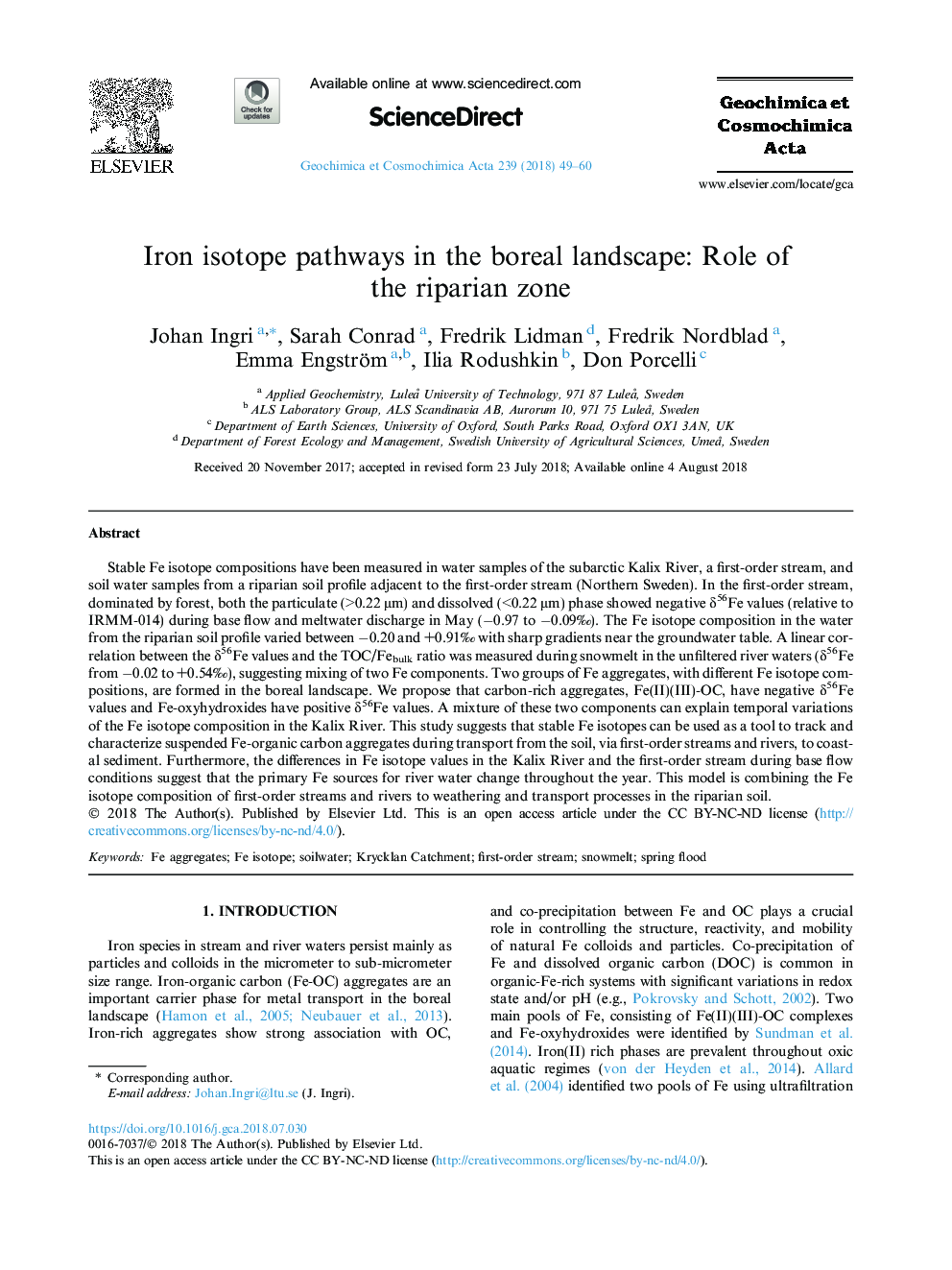| Article ID | Journal | Published Year | Pages | File Type |
|---|---|---|---|---|
| 8910563 | Geochimica et Cosmochimica Acta | 2018 | 12 Pages |
Abstract
Stable Fe isotope compositions have been measured in water samples of the subarctic Kalix River, a first-order stream, and soil water samples from a riparian soil profile adjacent to the first-order stream (Northern Sweden). In the first-order stream, dominated by forest, both the particulate (>0.22â¯Âµm) and dissolved (<0.22â¯Âµm) phase showed negative δ56Fe values (relative to IRMM-014) during base flow and meltwater discharge in May (â0.97 to â0.09â°). The Fe isotope composition in the water from the riparian soil profile varied between â0.20 and +0.91â° with sharp gradients near the groundwater table. A linear correlation between the δ56Fe values and the TOC/Febulk ratio was measured during snowmelt in the unfiltered river waters (δ56Fe from â0.02 to +0.54â°), suggesting mixing of two Fe components. Two groups of Fe aggregates, with different Fe isotope compositions, are formed in the boreal landscape. We propose that carbon-rich aggregates, Fe(II)(III)-OC, have negative δ56Fe values and Fe-oxyhydroxides have positive δ56Fe values. A mixture of these two components can explain temporal variations of the Fe isotope composition in the Kalix River. This study suggests that stable Fe isotopes can be used as a tool to track and characterize suspended Fe-organic carbon aggregates during transport from the soil, via first-order streams and rivers, to coastal sediment. Furthermore, the differences in Fe isotope values in the Kalix River and the first-order stream during base flow conditions suggest that the primary Fe sources for river water change throughout the year. This model is combining the Fe isotope composition of first-order streams and rivers to weathering and transport processes in the riparian soil.
Keywords
Related Topics
Physical Sciences and Engineering
Earth and Planetary Sciences
Geochemistry and Petrology
Authors
Johan Ingri, Sarah Conrad, Fredrik Lidman, Fredrik Nordblad, Emma Engström, Ilia Rodushkin, Don Porcelli,
